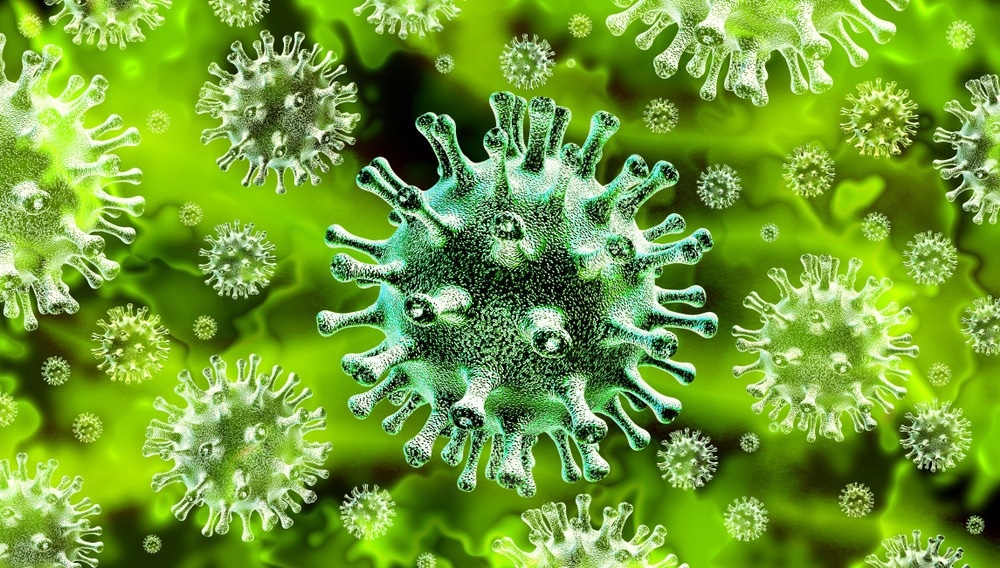In a recent study published in Viruses, researchers presented the direct plasmid transfection method for severe acute respiratory syndrome coronavirus 2 (SARS-CoV-2) virus-like particle (VLP) production in insect cells and applied the VLPs to evaluate the efficacy of monoclonal antibodies (mAbs) and vaccinated donor sera.
 Study: Baculovirus-Free SARS-CoV-2 Virus-like Particle Production in Insect Cells for Rapid Neutralization Assessment. Image Credit: Lightspring/Shutterstock
Study: Baculovirus-Free SARS-CoV-2 Virus-like Particle Production in Insect Cells for Rapid Neutralization Assessment. Image Credit: Lightspring/Shutterstock
Background
Biosafety restrictions limit research with authentic SARS-CoV-2 virus, and therefore, lentivirus- or vesicular stomatitis virus (VSV)-based pseudovirus (PV) systems are used. However, the resulting PV particles express only one of the SARS-CoV-2 structural proteins [envelope (E), spike (S), membrane (M), and nucleocapsid (N). In addition, PV production involves complex processes and requires biosafety level 2 (BSL2) laboratories.
Alternatively, VLPs can be produced that resemble authentic viruses, assemble by themselves upon SARS-CoV-2 protein co-expression, and are safe since they lack genomic data and, therefore, cannot replicate. Additionally, VLPS can be produced in BSL1 laboratories. SARS-CoV-2 VLPs are usually produced in BEVS (baculovirus expression vector system)-based cell systems that offer high VLP yields and have neutralized SARS-CoV-2 in Syrian hamsters. Thus, BEVS-VLPs can potentially be used as coronavirus disease 2019 (COVID-19) vaccines.
About the study
In the present study, researchers produced plasmid-based SARS-CoV-2 VLPs in an insect cell system and used them for a green fluorescent protein (GFP)-based cellular assay for simple and rapid screening of serological immunity induced by anti-S mAbs and sera.
The team analyzed different expression vector designs and optimal ratios of SARS-CoV-2 M for GFP-based cell binding assays and assessed their performance in SARS-CoV-2 S-based enzyme-linked immunosorbent assay (ELISA). Subsequently, VLP quality was assessed by transmission electron microscopy (TEM), epifluorescence microscopy, confocal microscopy (CFM), Western blot, and nano tracking analysis (NTA) to evaluate angiotensin-converting enzyme 2 (ACE2) binding and resemblance to authentic SARS-CoV-2. Further, mAbs and sera from vaccinated German individuals were screened using the self-developed VLP inhibition assays to assess their inhibition potential.
SARS-CoV-2 E-, M-, and S-encoding deoxyribonucleic acid (DNA) sequences of the SARS-CoV-2 Wuhan-Hu-1 strain were inserted into the pOpiE2 vector and transiently expressed in High Five cells. SARS-CoV-2 M was fused to GFP. For transient expression in Expi293F cells, ACE2 protein lacking the signal peptide (SP) was inserted into the pCSE2.5 vector.
TMPRSS2 expression was attained by substituting half of the pCSE2.5-ACE2 plasmid with Corona2a1 DNA, and transfection experiments were performed, following which the VLP-containing supernatant was harvested. Further, VLPs were subjected to sodium dodecyl sulphate-polyacrylamide gel electrophoresis, (SDS-PAGE), staining, in-gel fluorescence, and immunoblotting analyses.
The enriched VLPs were analyzed by sandwich ELISA assays performed using STE90-C11 as the SARS-CoV-2 S RBD-specific capture Ab and soluble ACE2-mFc fusions for detection. Ratios such as 1:1:1, 1:1:4,1:1:6, and 1:1:8 for S:E:M expression and VLP-6M-Furin (VLP-6M lacking Wuhan-Hu-1 S) were assessed. Concentrated VLPs were transfected with ACE2-expressing Expi293F cells, and flow cytometry (FC) analysis was performed to determine the amount of VLP bound to ACE2-expressing Expi293F cells.
Results
Straightforward plasmid ratio adjustments were used to co-express SARS-CoV-2 E, M, and S that were self-assembled into VLPs. M protein fusion to GFP enabled direct quantification of ACE2-binding inhibition by mAbs or sera from vaccinated individuals. Secondary Abs were not required for VLP purification or fluorescent labeling for FC analysis. SP and M protein fusion significantly reduced the VLP-binding signal in the sandwich ELISA assays, whereas SP fusion to E protein enhanced the binding.
VLP expression vectors encoded E and S preceded by SP, whereas M expression lacked one. The sandwich ELISA and FC analyses did not show significant differences in VLP binding when different S:E:M ratios were used except for slight binding for VLP-6M-Furin. For subsequently performed cellular assays, the team chose VLP-6M. The TEM analysis showed similar VLP and SARS-CoV-2 authentic virus structures. The S amount on the VLP surface correlated with that of the S expression vector used in transfection experiments and led to a typical S aura for VLPs-1M, 4M, and 6M.
The NTA analysis showed a yield of 1013 VLPs per liter for all VLPs, with a lower yield (1012) for VLP-6M-Furin. The mean particle diameter for VLP-6M was 145 nm (VLP-6M), similar to that of CoVs (100 to 200 nm). The Western blot and SDS-PAGE analyses showed M and S (but not E) incorporation into VLPs. VLPs were seen as tiny green dots on the surfaces of ACE2-TMPRSS2 co-expressing Expi293F human embryonic kidney (HEK) cells with autofluorescence.
VLP counts and GFP intensity were marginally higher for VLP-6M than VLP-6M-Furin and varied based on ACE2 expression. In the FC analysis, significant differences were observed between VLP-6M’s VLP and GFP histograms, in which two different populations were identified, one expressed bound VLP-6M and ACE2, whereas the other did not. Contrastingly, for VLP-GM-Furin, a population shift was observed, indicative of lower binding capacity, as seen in ELISA.
Further, the optimization experiments showed that cell-binding assays could be performed within an hour without significant signal loss, and VLPs could be stored at −80 °C. STE90-C11, STE94-F12, STE94-B1-E12, and STE90-B2-D12 mAbs (in 150 µg/mL concentration) showed successful VLP-ACE2 binding inhibition and the VLP assay results mirrored those of authentic SARS-CoV-2 neutralization assays. Significant binding inhibition was observed at 1:10 dilution of sera of triple BNT162b2 vaccinees.
Conclusion
Overall, the study findings showed that SARS-CoV-2 VLP production using the direct plasmid transfection approach is a simpler, more rapid, and reliable alternative to the BEVS approach.